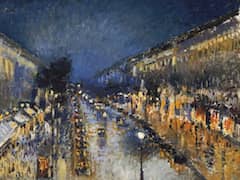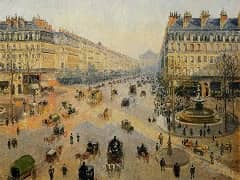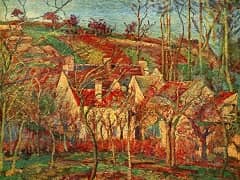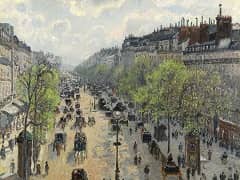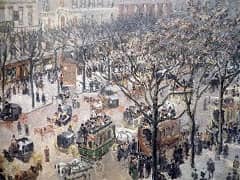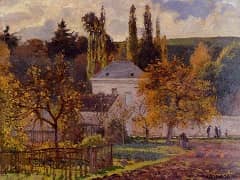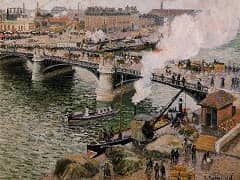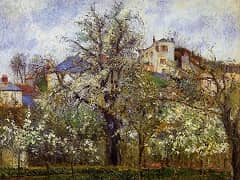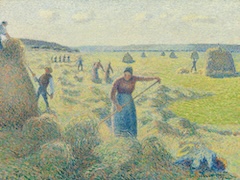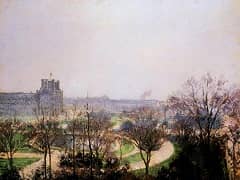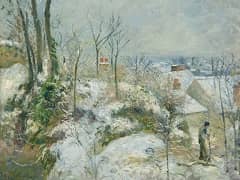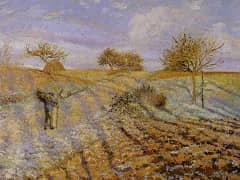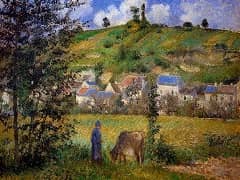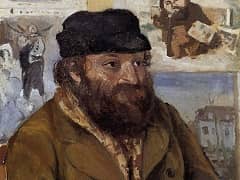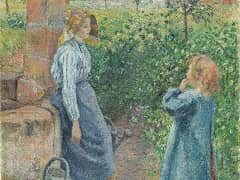Boulevard Montmartre, Spring by Camille Pissarro
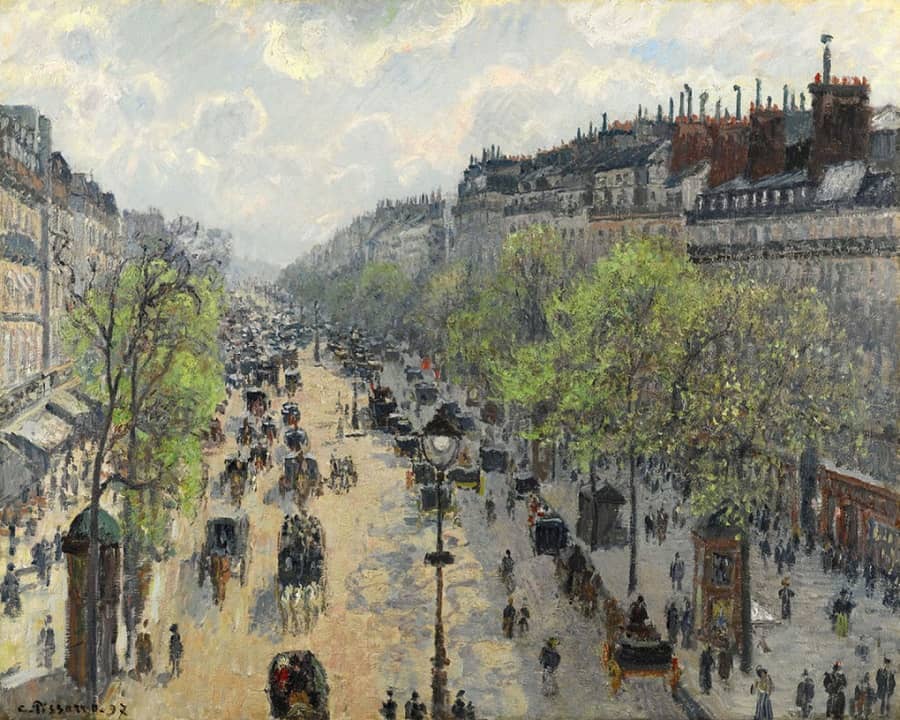
Pissarro regarded the whole of this series as a great success and it was probably the precision with which he had rendered a scene charactered by perpetual movement that caused him to remark:
My Avenues are so clear that they would not suffer alongside the paintings of Puvis de Chavannes'. "
Camille Pissarro's Boulevard Montmartre at Night is now considered as the most celebrated night scene created by impressionists, along with The Starry Night by Vincent van Gogh.

